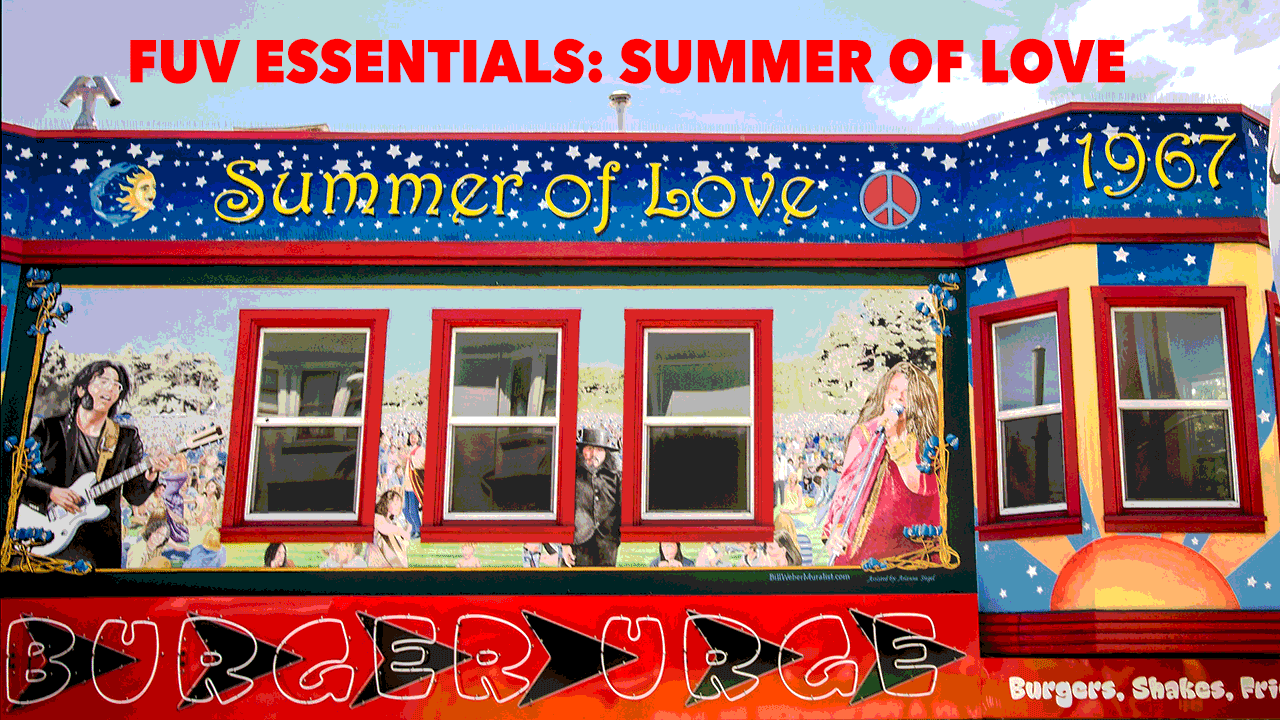Summer of Love

(Photo via flickr.com/m01229, CC BY-NC 2.0)
What was the gateway to 1967's Summer of Love? The very phrase conjures a psychedelic idyll of the Sixties: doe-eyed young women in suede fringe vests and gauzy skirts, plaiting daisies in their Lady Madonna-length locks or luxurious Afros, or blissed-out hippies splayed on the grass, hazily wreathed in the smoke of Acapulco Gold and campfires. On the road to San Francisco were battered VW buses with rainbow-hued paint jobs and plastered with Owsley bears, headed west to Haight-Ashbury, that Eden-like mecca for young lovers, musicians, poets and revolutionaries. There was fiction and veracity to those well-worn tropes.
It was an uncertain year shadowed by the Vietnam War, the draft, student protests, youthful disaffection with the status quo, and political upheaval. The mood of the Sixties was rapidly shifting and the pursuit of peace was paramount, a search punctuated by the perils and pleasures of free love and mindbinding hallucinogens. But the real doorway to the Summer of Love came via a music festival — and it happened in Monterey, fifty years ago this month.
The Monterey International Pop Festival, which took place on the weekend of June 16-18, 1967, was the second rock music gathering of its kind in the United States (the first, one week prior, was the Fantasy Fair and Magic Mountain Music Festival in Marin County, California). Perhaps due to the breakout performances of artists like Janis Joplin with Big Brother and the Holding Company and the Jimi Hendrix Experience, Monterey Pop became the mothership for thousands of pop festivals in this country (and the globe) that have followed in its wake, from Woodstock to Lollapalooza to Coachella. San Francisco's Human Be-In on January 14, 1967 in Golden Gate Park, attracting 35,000 participants, framed the narrative of a counterculture gathering and bohemian lifestyle, but Monterey Pop gave the experience its soundtrack. (The two-hour special Why Monterey Pop Mattered further explores the festival's significance, and airs Tuesday, June 13 at 8 p.m. EDT on FUV).
Curiously, 1967's season of the flower child was actually a concerted branding effort, a way for San Francisco to control its image and not only appeal to the teenagers and young adults flooding the city in droves, but to keep them safe, housed, healthy, and fed. An idea conjured by the Council for the Summer of Love, which included members of the Family Dog and the Diggers, the urban utopia even had its own theme song, Scott McKenzie's "San Francisco (Be Sure to Wear Flowers in Your Hair)," written by John Phillips of the Mamas and Papas, which concurrently promoted the three-day festival.
Monterey Pop, the tumble-down-the-rabbit-hole to that iconic summer, offered a starry lineup that shimmered with unforgettable performances: Joplin and Hendrix, Otis Redding, the Mamas and Papas, Simon and Garfunkel, the Who, Ravi Shankar, the Jefferson Airplane, the Grateful Dead, and so many more (and some notable no-shows too, like the Rolling Stones and the Beatles).
There's a brand new Monterey International Pop Festival slated in 2017, the same June weekend as the original event, with a lineup that includes scores of musicians who weren't even born in 1967 (and some not for couple of decades after) like Leon Bridges, Regina Spektor, Gary Clark, Jr., Jack Johnson, Jim James, Father John Misty, and Kurt Vile and the Violators. A few of the artists on the 50th anniversary roster poignantly bridge to the original Monterey Pop: the indefatigable Eric Burdon and the Animals, back for a repeat performance; Norah Jones, whose father Ravi Shankar played the first festival; and the Grateful Dead's Phil Lesh, who'll play a headlining Sunday set with his Terrapin Family Band. There will be a 2017 tribute to the 1967 lineup by the younger generation of artists too, with Leon Bridges channeling Otis Redding, Jim James taking on the Who, and Gary Clark, Jr. coaxing the spirit of Jimi Hendrix to the stage (although Clark might not destroy his guitar and set it alight).
The transformative and transcendent music that audaciously filtered through the air that summer, far beyond the confines of the season or the Monterey Pop festival, included the Beatles' Sgt. Pepper's Lonely Hearts Club Band, Cream's Disraeli Gears, the Jimi Hendrix Experience's Are You Experienced?, Pink Floyd's The Piper at the Gates of Dawn, the Jefferson Airplane's Surrealistic Pillow, and eponymous debuts by Big Brother and the Holding Company, Moby Grape, The Velvet Underground & Nico, and the Grateful Dead. It was a heady, thrilling year of music and a watershed in rock 'n' roll history.
It's been a fifty-year embryonic journey since the Monterey International Pop Festival. The then-hopeful hippie kids, the "gentle people" of McKenzie's hit, are now hovering around their 70th year and likely casting a bemused and amused eye on another generation — maybe their grandchildren — queued up at rock festivals across the globe, from Glastonbury to Roskilde to Austin City Limits. Some of those Sixties survivors might even make it back to the Monterey County Fairgrounds next weekend, with fresh flowers in their greying hair and plenty of tales to explain just why 1967's Summer of Love is an FUV Essentials experience.

